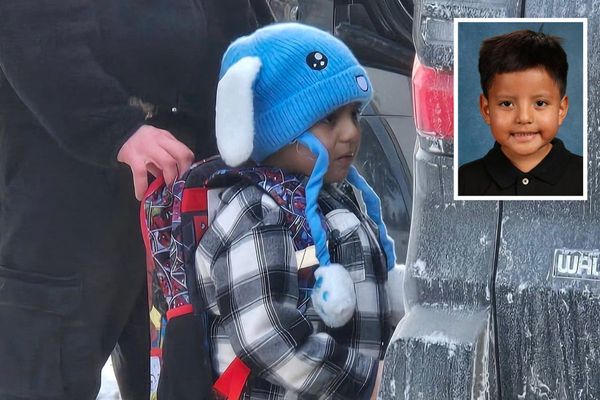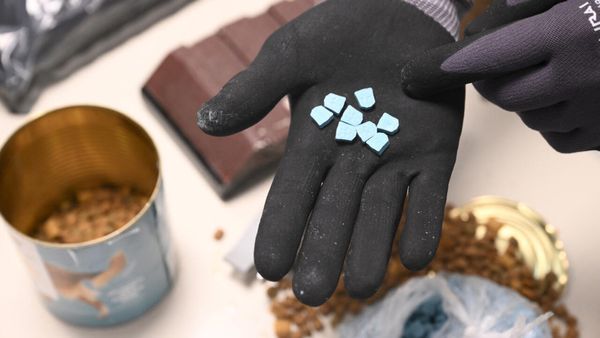
For the past 24 years, Jose Gomez has been on call at any hour.
Gomez works as a community violence interrupter in Stockton, California, focused on extracting high-risk youth from the cycles of violence in their own neighborhoods. Sometimes he’s called to go to a hospital or a crime scene. Sometimes he’s in the aftermath of a shooting to guide survivors and their families away from retaliation. Sometimes he mediates conflicts before they turn violent. Sometimes he helps clients find jobs, buy work attire, relocate, enroll in school, get a driver’s license or talk through their problems.
To Gomez, each angle of this work is a calling. And when he first started the job, he was excited to go out at any time. But these days, he finds himself wincing for a moment when the phone rings in the middle of the night. “We see a lot of death, of course, and a lot of discouragement,” said Gomez, an outreach supervisor for Stockton’s office of violence prevention. “I know it took a toll on me because, I mean, the brain can only handle so much negative, despair and depression and hopelessness.”
The work of violence prevention specialists has long gone under the radar. In recent years, however, there’s been more recognition of their work, with the White House praising this model for violence reduction and a growing number of cities investing in it. But as the profile of community violence interrupters grows, these workers say that being on the frontlines can take a similar toll as other first responders – like paramedics or firefighters – as they navigate secondhand trauma, unpredictable hours and the ebb and flow of grant funding that their jobs rely on.
This has become even more pronounced following the surge in gun homicides in 2020, the year firearms became the leading cause of death among children and teens. To cope, some are temporarily stepping away from their work, while others are calling for more resources to help make the much-needed work of violence prevention more sustainable.
“[I’ve tried] my best throughout the years not to carry all the secondhand trauma,” said Armando Alvarez II, project director for the Restore Project’s crisis intervention team in Fresno, in California’s Central Valley. “Whenever I would feel that weight and that burden, I would just pray. That was a big force in me continuing. But finally my body said it was time to rest.”
***
Symptoms of burnout are common in the field of violence prevention. According to a 2021 survey of violence prevention workers in Los Angeles, Oakland, Chicago and Baltimore by the Giffords Center, more than half of those interviewed said the trauma of the people they serve affects them, and that this trauma leads to lack of sleep that impacts their work.
The study also found that 87% of violence prevention workers work additional hours every month and that 82% worry at least occasionally about being able to pay their rent or mortgage.
While some may receive overtime, violence interruption workers do not receive hazard pay. Time off is hard for many to take, sometimes for financial concerns, but also because of the relationships they build – they want to be present for the people who need them.
Alvarez said that he typically works 10 to 18 hours per day, between his street outreach and two additional jobs as a counselor at a Fresno middle school and at a local hospital. “When we respond to shootings, sometimes it’s 2 or 3 in the morning … You can get shot out there any time,” he said of violence interruption. “Anything could happen, but we know those risks and we’re glad to do it.”
Stress can come from the work itself, and also the financial uncertainty that often comes with it.
“My dream has always been that this would become an actual occupation everywhere, not just work done through grants,” Alvarez said, “so people can give their 100% knowing they’re financially stable and able to take care of their families.”
Alvarez, who has been a violence prevention worker for 12 years, entered the field in part because of his own experiences: he joined a gang at a young age and dealt drugs for years. He was shot at, and he made a plan for retribution. But when he asked his brother if he could store his gun at his house, his brother refused, and instead, invited him to church. Alvarez agreed.
There, he reflected on the cascade of choices that had gotten him to that point, choices that began in middle school. Overwhelmed with feelings he thought he was too numb to experience, he found himself curled up at the front of the sanctuary, apologizing for everything he’d done.
“I felt so light. I felt forgiven. I felt like, wow, I could breathe again,” Alvarez said. “I hadn’t felt emotion in years.”
Later, he was approached about working with gang members, to help them transition on to new pathways. He said yes right away, before he even knew that he’d be paid. After joining the Restore Project, he also became a minister.
Gomez has a similar story. He grew up in Mexico, where he was a standout student. But after his family moved to Stockton, he was bullied. He didn’t speak English yet, and being smart didn’t make him popular. He eventually fought back, and by sixth grade he joined a gang.
In the following years, he said, he was stabbed and shot, and his house was firebombed. But the positivity of a persistent English teacher led to his first B in 10th grade, and he moved up to the honor roll in his last two years of high school.
After graduation he spent four years in the marines, returning to Stockton with a desire to help people whose situation he understood, to be what his English teacher had been to him.
Violence prevention workers often come from the neighborhoods they serve – many are survivors of violence or are former gang members – giving them a singular toolbox as they work to build trust.
“It’s a peer voice that understands how the community works,” said Fernando Rejón, executive director of the Urban Peace Institute in Los Angeles. “They understand that parallel universe and can maneuver and navigate in a way that law enforcement cannot.”
As valuable as it is for building relationships, drawing on lived experience can exacerbate the strain of vicarious trauma at work, especially if their own trauma is untreated: more than 90% of those surveyed by the Giffords Center said they had witnessed an act of gun violence prior to starting this work, while 56% reported being a direct victim of gun violence.
***
In Stockton’s office of violence prevention, Antonia Gilson wasn’t previously in a gang. Her community roots run deep in a different way – she’ll dye your roots. A hair stylist for 30 years, Gilson practiced being an empathetic listener whose work helps boost a client’s self-esteem. It was surprisingly apt preparation for a career in violence prevention.
“It feels the same; it’s just different people,” said Gilson, a peacekeeper – Stockton’s title for violence prevention workers – for the past four years. “[It’s like] they’re in my chair and we’re just having a conversation.”
Gilson hasn’t experienced burnout, but she said the cries of pain from a family – from mothers, especially – in the hospital after a homicide are the hardest to bear. To process those days, she talks to her husband, a Child Protective Services worker who can understand her world. But it’s in the hospital, she said, that she also feels her calling to comfort the most.
“I don’t know what comes over me, but when I’m at the hospital, it’s not me at home – it’s someone totally different,” she said. “I think we’re all born with something, right? I’m definitely born to be a servant. I am.”
Being able to debrief is vital. Rejón said the field needs more supportive services, more education about burnout and more access to clinicians, something echoed in a briefing from the Health Alliance for Violence Intervention. In 2020, Los Angeles was the only city in the country to classify intervention workers as emergency response personnel, partly to aid in public health efforts and partly to mediate conflict at protests, he said.
“A lot was put on the backs of peacemakers, but they weren’t supported at a level they needed to be supported,” Rejón said. “We had intervention workers that died from Covid. They would be at a meeting one week and the next meeting they wouldn’t be there.”
Now, post-pandemic, Rejón said, wellbeing is a top priority because of compounding and recurring trauma, or premature health issues tied to stress. UPI hopes to open training and wellness centers in LA for intervention workers to meditate, exercise and learn techniques for managing stress.
Alvarez also pointed to the importance of mental health benefits – and encouragement to use them, since many violence prevention workers come from backgrounds where accepting help with mental and emotional well-being isn’t seen as strength.
For more than a decade, Alvarez has urged others to take time for themselves – “You can’t pour from an empty cup,” he tells them – but hadn’t carved out any for himself. He recently returned from a month and a half off, his first substantial break since he started this work.
Gomez, too, took three months a few years ago off to care for himself.
“I didn’t know if I had it in me to come back, but I did a lot of soul-searching, a lot of prayer and meditation, and I was able to continue this work,” Gomez said. “I’m glad I did. I came back with an even stronger resolve to see people’s lives have hope, just like I have hope.”







